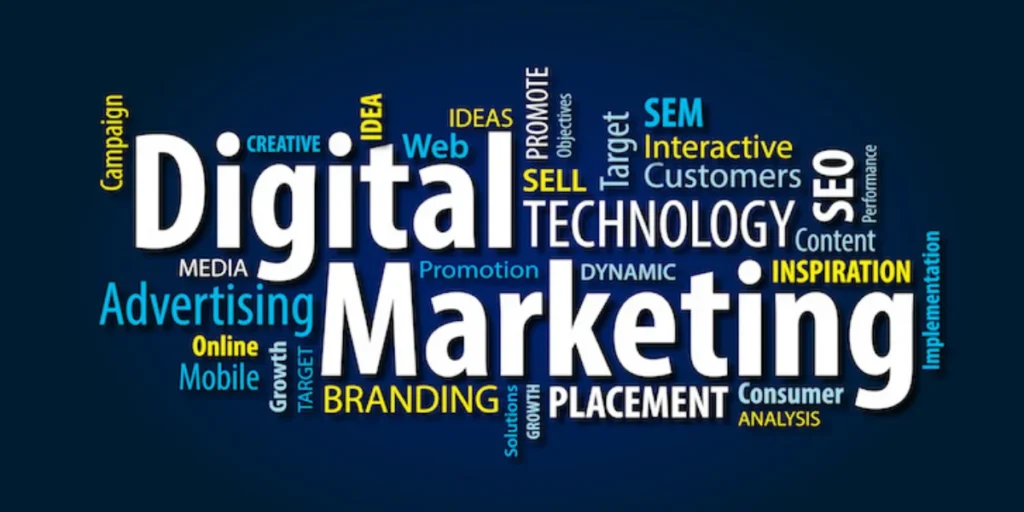A digital marketing campaign is more than a set of online promotions—it’s a comprehensive strategy designed to achieve specific business goals through digital channels. Whether it’s boosting brand awareness, generating leads, or increasing sales, a digital marketing campaign must be built on a clear understanding of audience behavior, marketing objectives, and the competitive landscape. Today’s digital environments are highly dynamic, requiring brands to stay agile, creative, and data-driven. A successful campaign begins with well-defined goals, audience segmentation, and platform selection, ensuring that every piece of content and every interaction aligns with your overall business strategy. The digital marketing campaign must be seen not as a one-off project but as an ongoing engine for engagement and growth.
Setting Clear Objectives for Your Digital Marketing Campaign
Every effective digital marketing campaign starts with establishing clear, measurable objectives. Without defined goals, it becomes impossible to evaluate success or optimize performance. Objectives can vary from increasing website traffic and driving product sales to capturing email subscribers or enhancing brand visibility. These goals must be SMART—specific, measurable, achievable, relevant, and time-bound—to guide your efforts effectively. For instance, aiming to increase website conversions by 20% in three months gives the campaign direction and purpose. By anchoring your strategy in concrete goals, you can align your messaging, creative content, and advertising tactics to support these outcomes and track real progress over time.
Knowing Your Audience Inside and Out
A digital marketing campaign thrives on how well you know your audience. Understanding their demographics, interests, pain points, and online behavior allows you to craft personalized messages that resonate and convert. Using analytics tools, customer feedback, and audience personas helps create detailed profiles that guide content creation, platform selection, and communication style. Whether targeting Gen Z on TikTok or professionals on LinkedIn, tailoring your approach to fit audience expectations makes your campaign more engaging and relevant. A customer-centric digital marketing campaign ensures that every touchpoint speaks directly to the needs and motivations of your target audience, increasing the chances of meaningful interaction and conversion.
Choosing the Right Platforms for Impact
Selecting the appropriate channels is a crucial element of any digital marketing campaign. With so many platforms available—from social media and search engines to email and programmatic advertising—it’s essential to focus on where your audience spends time and how they prefer to engage. For example, B2B campaigns often perform better on LinkedIn, while lifestyle brands may gain more traction on Instagram or Pinterest. Each platform has its own strengths and user behavior patterns, so optimizing content accordingly can amplify reach and performance. Using cross-channel strategies that integrate efforts across platforms creates consistency in your messaging and helps reinforce your brand’s presence throughout the customer journey.
Crafting Compelling Content That Converts
Content lies at the heart of every digital marketing campaign. Whether it’s videos, blog posts, infographics, or email newsletters, your content must educate, entertain, or inspire action. High-performing content addresses customer pain points, showcases product benefits, and tells compelling stories that differentiate your brand. Using a mix of content types and formats keeps your campaign fresh and engaging, while strong calls-to-action (CTAs) guide users toward the next step. SEO-friendly content helps drive organic traffic, while visually dynamic posts catch attention on social feeds. By developing a cohesive content plan tied to your campaign goals, you ensure each asset supports your broader strategy.
Leveraging Paid Media for Greater Reach

While organic strategies build long-term value, paid media accelerates the success of your digital marketing campaign by driving immediate traffic and engagement. Platforms like Google Ads, Facebook Ads, and YouTube offer precise targeting options that allow you to reach specific audiences based on interests, behavior, and location. A well-executed paid media plan enhances visibility and supports conversions at every stage of the funnel. A/B testing different ad creatives and messaging helps refine performance, while budget allocation should prioritize high-ROI channels. Whether promoting a new product or retargeting abandoned carts, paid media is essential for amplifying your campaign’s impact and extending its reach.
Incorporating Automation and AI Tools
In today’s fast-paced digital world, marketing automation and AI-driven tools are critical for scaling and optimizing your digital marketing campaign. Automation allows you to schedule emails, manage social media posts, and trigger customer journeys based on specific behaviors, saving time and increasing efficiency. AI-powered tools enhance personalization by analyzing user data and delivering content tailored to individual preferences. For instance, chatbots can engage users in real-time, providing support and driving conversions around the clock. Predictive analytics also helps forecast trends and customer needs, enabling proactive adjustments. By integrating these technologies, your campaign becomes more intelligent, agile, and results-oriented.
Analyzing Performance with Real-Time Data
A data-driven approach is essential for monitoring and improving your digital marketing campaign. Real-time analytics provide insights into what’s working and what’s not, allowing you to pivot quickly and optimize results. Metrics like click-through rates, bounce rates, conversion rates, and customer acquisition costs reveal how your campaign is performing at each stage. Using tools like Google Analytics, Meta Insights, or CRM dashboards, marketers can break down data by channel, audience segment, or content type. Regular performance reviews help identify trends and areas for improvement. Data isn’t just about reporting—it’s a feedback loop that empowers smarter decisions and better outcomes.
Optimizing Campaigns with A/B Testing
Testing is the secret weapon behind high-performing digital marketing campaigns. A/B testing enables marketers to experiment with different headlines, images, CTAs, or email subject lines to determine what resonates best with their audience. These small changes can lead to significant improvements in engagement and conversion rates. For example, testing a blue CTA button against a red one might reveal a dramatic preference that increases sign-ups. Continual testing and optimization ensure that your campaign evolves with user behavior and stays competitive in a rapidly shifting digital landscape. By fostering a culture of experimentation, marketers can innovate and refine their strategies continuously.
Maintaining Brand Consistency Across Channels
Brand consistency is vital to building trust and recognition in a digital marketing campaign. Your visuals, tone, messaging, and overall brand voice must be unified across all platforms—from email and websites to social media and ads. Inconsistent branding can confuse prospects and dilute your message, undermining your campaign’s effectiveness. Using brand guidelines helps keep all content aligned, especially when multiple teams or agencies are involved. Consistent branding reinforces credibility and ensures that every interaction, no matter where it occurs, contributes to a cohesive customer experience. Over time, this consistency strengthens brand recall and builds loyalty among your target audience.
Scaling Campaign Success Over Time
A successful digital marketing campaign doesn’t end when you hit your first milestone. The real growth comes from scaling what works. Analyzing past performance helps you identify winning strategies that can be replicated or expanded across other products, markets, or regions. For example, if a particular video ad performs well on Instagram, you might adapt it for TikTok or Facebook. Scaling also involves investing in tools, training, and infrastructure that support growth without sacrificing quality. As your brand matures, campaigns should evolve with changing customer expectations, market trends, and technological advancements. Sustainable scaling turns isolated wins into long-term competitive advantages.
Conclusion
A well-executed digital marketing campaign is a cornerstone of modern business success. From defining clear objectives and knowing your audience to leveraging data, automation, and cross-channel strategies, each component plays a critical role in driving outcomes. The landscape is constantly changing, and so must your tactics—there’s no one-size-fits-all solution. By continuously testing, optimizing, and learning from your performance data, you can build campaigns that not only generate short-term wins but also lay the foundation for sustained growth. Embracing innovation while staying true to your brand’s core values ensures that your digital marketing campaign stands out in a crowded digital marketplace and delivers meaningful, measurable impact.
















